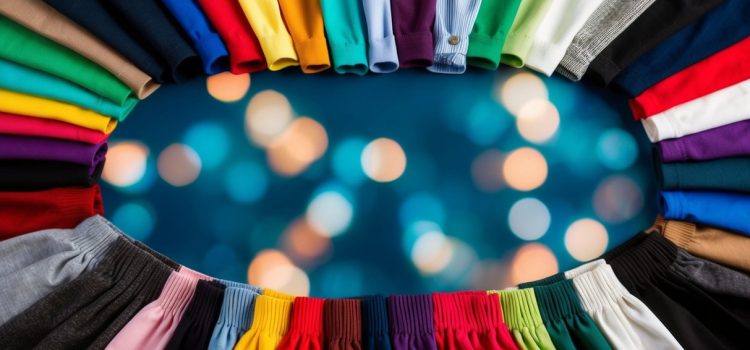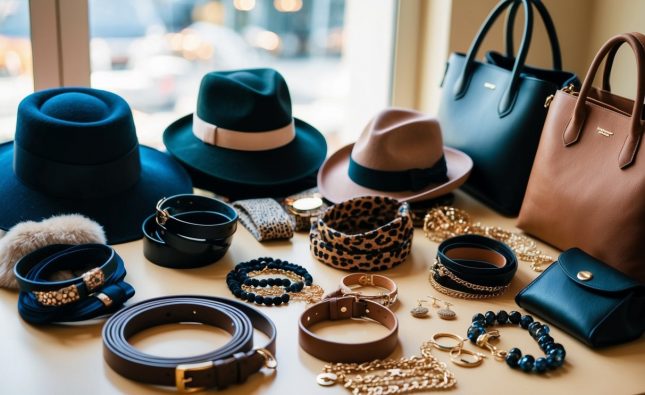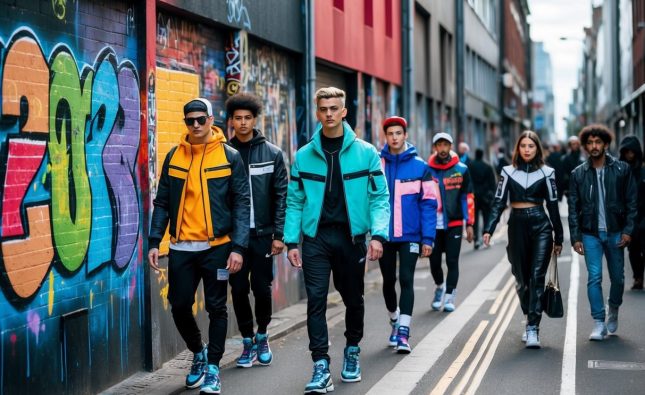
Choosing the right color combinations for outfits is essential for creating stylish and cohesive looks. The best color pairings often include complementary shades like navy and mustard, or classic combinations such as black and white. Understanding these pairings can help anyone elevate their wardrobe and express their personal style effectively.

Color theory plays a significant role in fashion. Colors can evoke particular emotions and set specific tones for an outfit. For instance, warm tones, such as red and orange, can create a vibrant, energetic look, while cool tones like blue and green offer a more calming and sophisticated vibe.
Exploring various color combinations opens up endless possibilities for creativity in fashion. By experimenting with different shades and understanding which colors work well together, individuals can enhance their appearance and confidence in any setting.
Understanding Color Theory
Color theory provides a framework for selecting colors that pair well in outfits. It encompasses the color wheel, the principles of harmony and contrast, and the psychological effects of colors. Each aspect contributes to creating visually appealing combinations.
Color Wheel Basics
The color wheel is a circular diagram that organizes colors logically. It consists of primary, secondary, and tertiary colors.
- Primary Colors: Red, blue, and yellow cannot be created by mixing other colors.
- Secondary Colors: Green, orange, and purple result from mixing primary colors.
- Tertiary Colors: These hues come from mixing primary and secondary colors, such as red-orange.
Understanding this structure helps individuals to see relationships between colors. Colors opposite each other (complementary) provide high contrast, while those next to each other (analogous) create harmony. Knowing these relationships aids in selecting outfits that have a balanced and appealing look.
Color Harmony and Contrast
Color harmony refers to aesthetically pleasing color combinations. It creates a sense of balance and cohesiveness in an outfit.
Common types of color harmony include:
- Complementary: Involves pairs of colors that are direct opposites on the color wheel.
- Analogous: Uses colors that are next to each other, offering subtle transitions.
- Triadic: Involves three colors evenly spaced on the wheel, creating a vibrant palette.
Contrast, on the other hand, highlights differences between colors. High contrast outfits can grab attention, while low contrast ensembles provide a softer appearance. The key is to mix and match these principles to suit personal style and occasion.
Psychology of Colors
Colors evoke specific emotions and associations. Understanding these can influence outfit choices effectively.
- Warm Colors (reds, yellows, oranges) often convey energy, warmth, and enthusiasm.
- Cool Colors (blues, greens, purples) are associated with calmness, tranquility, and professionalism.
- Neutral Colors (whites, blacks, grays) act as a foundation and offer versatility.
Choosing colors based on their psychological impact can enhance personal expression. For example, a confident look might incorporate bold colors, while a serene appearance could rely on softer shades. Knowing these effects allows individuals to make intentional choices in their outfits.
Classic Outfit Color Combinations
Classic outfit color combinations offer timeless style choices that can enhance any wardrobe. They emphasize harmony, balance, and statement-making without overwhelming the visual aesthetic. Three popular approaches include monochromatic elegance, analogous coordination, and complementary colors.
Monochromatic Elegance
Monochromatic outfits utilize variations in a single color to create a cohesive look. This approach can be appealing for its simplicity and sophistication. For example, wearing different shades of blue—from navy to baby blue—creates depth.
Textures play a key role in monochromatic styles. Combining materials such as denim, silk, and wool in varying shades adds interest. Accessories should also match the color scheme to maintain the effect, like a dark blue belt with lighter blue trousers.
Analogous Outfit Coordination
Analogous color combinations involve colors next to each other on the color wheel. This method provides a serene and visually pleasing array. For instance, green, blue-green, and blue together create a calm atmosphere while remaining stylish.
Choosing three colors can enhance an outfit’s appeal without clashing. Pairing a teal dress with a mint cardigan and soft blue shoes exemplifies this technique. Using varying shades and textures among these colors enhances visual interest and keeps the outfit dynamic.
Complementary Colors for Pop
Complementary colors are opposite each other on the color wheel, providing vibrant contrast. This combination attracts attention and can elevate a simple outfit. An example is pairing a fiery red top with deep green trousers.
Using complementary colors strategically can add excitement. Accessories are essential for balancing bright colors; for instance, a red handbag can tie in without overwhelming. Subtle prints or patterns can also be integrated to soften the bold contrast, making it wearable for various occasions.
Incorporating Patterns and Textures

Effective outfit creation involves blending patterns and textures for visual interest. Successfully combining these elements can enhance an outfit’s appeal, allowing for personal expression without overwhelming the overall look.
Stripes and Solids
Stripes can add movement and energy to an outfit, while solid colors provide a grounding effect. Pairing striped pieces with solid garments can create a balanced look. For instance, a striped shirt worn with solid colored trousers allows the stripes to stand out without clashing.
It is essential to choose complementary colors between the stripes and solids. Neutral tones like white, black, or navy work effectively with many striped patterns. Consider the width of the stripes as well; wider stripes create a bolder statement, while narrower stripes offer a subtler effect.
Mixing Patterns
Mixing patterns involves thoughtfully combining different prints without creating chaos. A common method is to combine two patterns that share a similar color palette. For example, pairing a floral top with a geometric skirt can create harmony if both feature similar color tones.
Proportions also matter when mixing patterns. Pair larger prints with smaller ones for a balanced look. Additionally, using a common base color helps unify the patterns, ensuring they complement rather than compete with each other.
Balancing Textures with Colors
Incorporating various textures into an outfit adds depth and interest. Different textures like denim, leather, cotton, and silk can elevate a look. When combining textures, consider the color scheme to maintain cohesiveness.
Layering textures can also be effective. A chunky knit sweater over a silky blouse introduces contrast while keeping the color palette unified. Aim for balance; if one aspect is bold, the rest should remain subtle to prevent visual clutter.
Seasonal Color Trends
Seasonal color trends play a crucial role in fashion, influencing choices in outfits throughout the year. Certain colors resonate with seasons, impacting how individuals express their style.
Spring and Summer Palettes
Spring and summer often showcase bright and vibrant colors. The palettes include soft pastels like lavender, peach, and mint green, which reflect the blooming landscape. These shades evoke freshness and warmth.
Bold colors such as coral, turquoise, and sunflower yellow also make a statement during this time. They are ideal for casual wear and beach outings. Floral patterns and light fabrics complement these hues.
Accessorizing with lighter tones such as white or beige helps balance vibrant shades. Pairing pastel tops with light denim or a coral dress with neutral sandals creates cohesive outfits that are both stylish and seasonally appropriate.
Fall and Winter Hues
Fall and winter bring a shift towards deeper, richer colors. Neutrals like charcoal, camel, and cream are prevalent, offering an elegant base for layering. Earthy tones such as burgundy, forest green, and rust also come into play.
These colors can be paired with textures like wool, velvet, and corduroy. For instance, a burgundy sweater with dark denim or a forest green coat over a creamy turtleneck attracts attention while promoting warmth.
Metallics such as gold and silver are popular accents during the colder months, enhancing evening looks. Accessories in these tones can elevate any outfit, creating a polished appearance suitable for various events.












